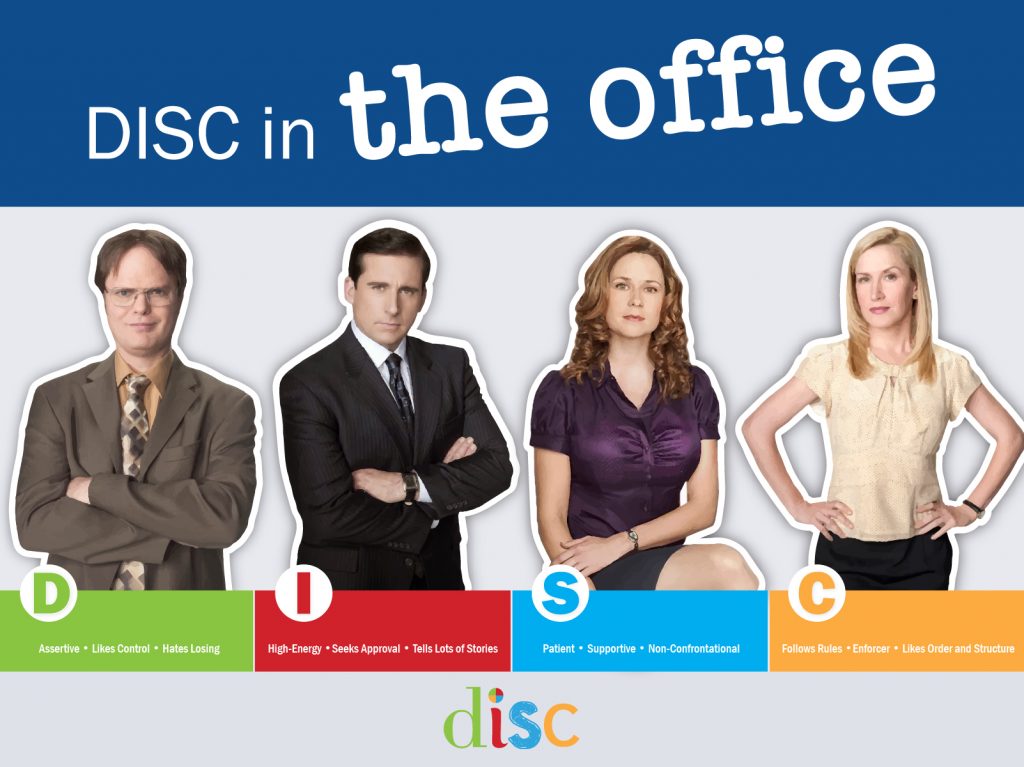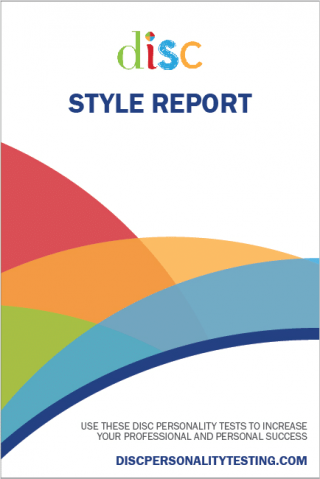
If you were looking to make a documentary that highlighted DISC styles and portrayed them in the most extreme ways possible, you’d wind up with The Office. NBC’s iconic mockumentary about a group of co-workers selling paper in Scranton, PA contains some of television’s most memorable characters. It also offers us several archetypes of the DISC personality style. In true comedic fashion, the characters in The Office tend to demonstrate the most extreme – at times out of control – expressions of the four DISC styles.
D-Dwight Shrute (Assertive, Likes Control, Hates Losing)
If you’ve read our other posts, you know most characters (like most people) have a blend of different DISC styles, with one being their dominant or functional trait. That doesn’t apply to Dwight Shrute. He is pure, unadulterated “D for Dominant.” Whether it’s his ongoing competition with Jim or his lifelong pursuit of becoming manager, Dwight must be the top dog. Don’t believe me. Take his word for it:
“How would I describe myself? Three words: hard working, alpha male, jackhammer, merciless, insatiable.”
In Dwight’s world there are two kinds of people: himself and idiots. And how does Dwight make his choices? “Whenever I’m about to do something, I think, ‘Would an idiot do that?’ And if they would, I do not do that thing.”
I-Michael Scott (High-energy, seeks approval, tells lots of stories)
Just as Dwight is a “Big D Dominant,” Michael is the extreme of the “I” style. When asked if he needed to be liked on one episode, he responded:
“Do I need to be liked? Absolutely not. I like to be liked. I enjoy being liked. I have to be liked. But it’s not like this, compulsive, need, to be liked. Like my need to be praised.”
That’s a dead-on caricature of people with the “I” trait. If we look at what Michael does during his days at Dunder-Mifflin, how much time does he spend helping his team sell more paper, and how much time does he spend on various schemes to win over their praise and affection?
Still, for all of Michael’s faults, we see him develop authentic relationships with each of his employees, another characteristic of the “I” leader.
S-Pam Beesly (Patient, Supportive, Kind, Non-confrontational)
First as Michael’s admin assistant and later as a member of the sales team, Pam is constantly being put in situations where she is the stabilizing force. It’s her steadiness that often keeps Michael from doing anything too crazy or stupid. She also occupies the unique position of peacemaker in Jim and Dwight’s ongoing prank war.
It speaks volumes about Pam’s consistency and trustworthiness that she is probably Dwight’s only true friend among the Dunder-Mifflin staff.
C-Angela Martin (Likes/follows/enforces/rules, likes order and structure)
As the head of the Party Planning Committee, Angela likes things done in a certain way. And when things are inevitably not done in her certain way, there’s a price to pay. While Angela is no doubt a “C,” there’s also a little bit of “D” in her personality, which might account for her attraction to Dwight.
“I don’t have a headache. I’m just preparing.” No doubt working in such an atmosphere as Dunder-Mifflin, Scranton Branch would be very frustrating. For hyper-C Angela, however, every day is a new chance for someone to annoy her by going outside the established structure.
What do you think about this list? We just tackled a few of the gang from The Office. What about Jim, Oscar, Darryl, or Toby? How about Phyllis, Creed or Andy? Let us know what other unique personalities you think went to work everyday at Dunder-Mifflin.
Each of us has our own unique communication style, our natural preference for how we prefer to communicate. This phenomenon is expressed through the DISC model. In this series of posts, we take characters from popular culture (television, movies, history, etc.) and analyze where we think they fall on the DISC spectrum. We hope these posts will help you better understand the DISC model.
But don’t just take our word for it. Feel free to share and comment on our social media channels with your own interpretations as well as suggestions for other pop culture icons we can look at through the DISC lens.

